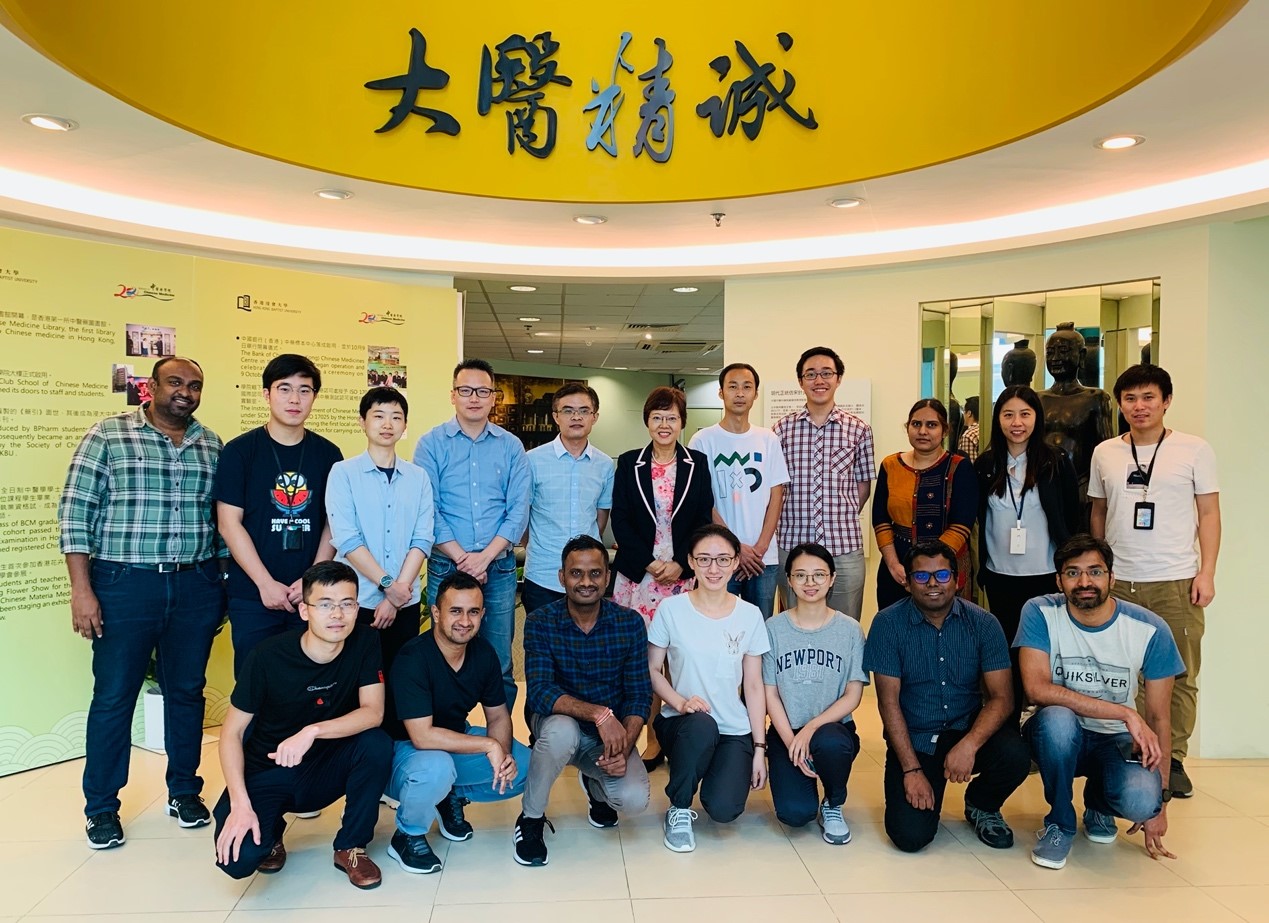
Team led by Professor Li Min discovers new molecular mechanism of autophagy in Alzheimer’s pathogenesis
July 02, 2020
Research led by Professor Li Min, Associate Dean of the School of Chinese Medicine and Director of Mr. and Mrs. Ko Chi Ming Centre for Parkinson's Disease Research at Hong Kong Baptist University, together with Dr. Lu Jiahong from the Institute of Chinese Medical Sciences at the University of Macau, has revealed a new mechanism of the autophagy-related gene NRBF2 (Nuclear Receptor Binding Factor 2) in regulating the fusion of autophagosomes with lysosomes, and the degradation of Alzheimer's disease-associated pathological protein, which suggests a potential new therapeutic strategy for the disease. The findings were recently published in the internationally reputed academic journal Autophagy.
Alzheimer's disease (AD) is the most common neurodegenerative disease, affecting 4-8% of the elderly population worldwide. As the disease progresses, a person with AD will develop severe memory impairment and gradually lose the ability to carry out everyday tasks. One of the main characteristics of AD is the accumulation of plaques that contain amyloid protein (Aβ) in the brain. A previous study jointly conducted by Prof Li’s and Dr. Lu's teams found that NRBF2 is reduced in the hippocampus of AD animal models and that it plays an important role in regulating Aβ homeostasis (Autophagy, 2017). This study has demonstrated, for the first time, that NRBF2 promotes the fusion of autophagosomes with lysosomes by modulating the CCZ1-MON1A-RAB7 system, which facilities the degradation of the C-terminal fragment of the amyloid precursor protein and reduces the formation of amyloid. This finding not only provides novel insights into how NRBF2 regulates autophagy, but also suggests a potential therapeutic approach to Alzheimer's disease, i.e. modulating the fusion of autophagosomes with lysosomes.
This project was supported by the General Research Fund of the Research Grants Council in Hong Kong (GRF/HKBU12101417, GRF/HKBU12100618), and the National Natural Science Foundation of China (81703487, 81773926). Professor Li and Dr. Lu are the co-corresponding authors of the published research. For more information about the study, please visit: https://www.tandfonline.com/doi/full/10.1080/15548627.2020.1760623.
李敏教授研究團隊發現細胞自噬在阿茲海默症中的新機制
香港浸會大學中醫藥學院副院長兼高智明伉儷柏金遜症研究中心主任李敏教授與澳門大學中華醫藥研究院路嘉宏博士率領的研究團隊發現自噬相關基因NRBF2調節自噬小體與溶酶體融合以及阿茲海默症病理性蛋白降解的分子機制,為阿茲海默症帶來全新的治療策略。有關研究成果近日於國際著名學術期刊《Autophagy》上發表。
阿茲海默症是最常見的大腦神經退行性疾病,影響全球4-8%的老年人。隨著病情發展,患者會出現嚴重的記憶障礙並逐漸喪失進行日常活動的能力。引起阿茲海默症的主要因素之一是含β澱粉樣蛋白(Aβ)的斑塊在腦內沈積。李教授與路博士團隊的前期研究已發現NRBF2在阿茲海默症動物模型腦內的海馬迴表達降低,並且有效調節Aβ 穩態(《Autophagy》,2017年)。是次研究則首次發現NRBF2通過調節CCZ1-MON1A-RAB7的相互作用,能促進自噬小體和溶酶體的融合,從而增強澱粉樣蛋白前體蛋白C端片段的降解,並減少Aβ澱粉樣蛋白的形成。研究結果不僅從嶄新角度揭示了NRBF2的自噬調節作用,也進一步提示促進自噬小體和溶酶體的融合可能是治療阿茲海默症的潛在策略。
此項研究獲香港研究資助局優配研究金(GRF/HKBU12101417、 GRF/HKBU12100618)和國家自然科學基金委(81703487、81773926)的資助。李教授和路博士為有關研究論文的共同通訊作者。有關研究詳請,請瀏覽: https://www.tandfonline.com/doi/full/10.1080/15548627.2020.1760623。

Professor Li Min (back row, centre) and members of her research team
李敏教授(後排中)及其團隊成員

